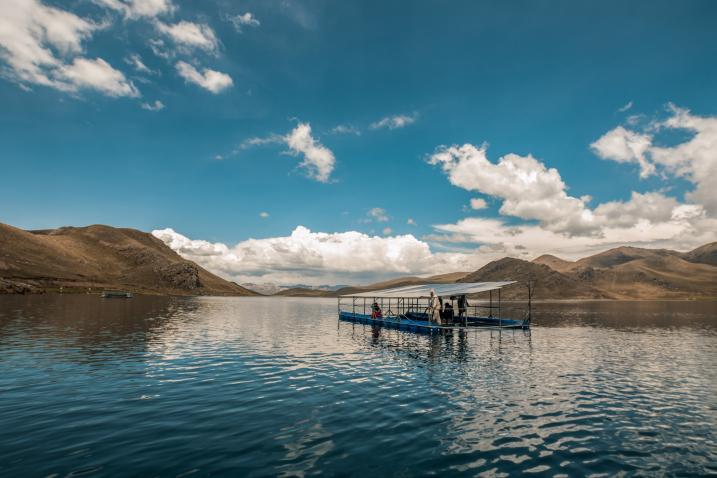The ozone layer, a fragile shield of gas, protects the Earth from the harmful portion of the rays of the sun, thus helping preserve life on the planet.
The phaseout of controlled uses of ozone depleting substances and the related reductions have not only helped protect the ozone layer for this and future generations, but have also contributed significantly to global efforts to address climate change; furthermore, it has protected human health and ecosystems by limiting the harmful ultraviolet radiation from reaching the Earth.
Montreal Protocol: fixing the ozone layer and reducing climate change
This year Ozone Day is held under the theme Montreal Protocol: fixing the ozone layer and reducing climate change. Today, we celebrate the achievements of the Montreal Protocol on Substances that Deplete the Ozone Layer. This year’s theme highlights and reiterates the positive impact of the Montreal Protocol on ozone layer recovery and reducing climate change. Especially emphasizing the Kigali Amendment, which through the phase-down of hydrofluorocarbons (HFCs) and improved efficiency in the cooling sector, will provide additional climate mitigation benefits. The UNEP Ozone Secretariat has prepared a social media package in six languages, including cards, videos, and suggested messages, available on this Trello board.
Background
A number of commonly used chemicals have been found to be extremely damaging to the ozone layer. Halocarbons are chemicals in which one or more carbon atoms are linked to one or more halogen atoms (fluorine, chlorine, bromine or iodine). Halocarbons containing bromine usually have much higher ozone-depleting potential (ODP) than those containing chlorine. The man-made chemicals that have provided most of the chlorine and bromine for ozone depletion are methyl bromide, methyl chloroform, carbon tetrachloride and families of chemicals known as halons, chlorofluorocarbons (CFCs) and hydrochlorofluorocarbons (HCFCs).
Vienna Convention for the Protection of the Ozone Layer
The scientific confirmation of the depletion of the ozone layer prompted the international community to establish a mechanism for cooperation to take action to protect the ozone layer. This was formalized in the Vienna Convention for the Protection of the Ozone Layer, which was adopted and signed by 28 countries, on 22 March 1985. In September 1987, this led to the drafting of The Montreal Protocol on Substances that Deplete the Ozone Layer.
Montreal Protocol
The principal aim of the Montreal Protocol is to protect the ozone layer by taking measures to control total global production and consumption of substances that deplete it, with the ultimate objective of their elimination on the basis of developments in scientific knowledge and technological information. It is structured around several groups of ozone-depleting substances. The groups of chemicals are classified according to the chemical family and are listed in annexes to the Montreal Protocol text. The Protocol requires the control of nearly 100 chemicals, in several categories. For each group or annex of chemicals, the Treaty sets out a timetable for the phase-out of production and consumption of those substances, with the aim of eventually eliminating them completely.
The timetable set by the Protocol applies to consumption of ozone depleting substances. Consumption is defined as the quantities produced plus imported, less those quantities exported in any given year. There is also a deduction for verified destruction. Percentage reductions relate to the designated base-line year for the substance. The Protocol does not forbid the use of existing or recycled controlled substances beyond the phase-out dates.
There are a few exceptions for essential uses where no acceptable substitutes have been found, for example, in metered dose inhalers (MDI) commonly used to treat asthma and other respiratory problems or halon fire-suppression systems used in submarines and aircraft.
In 1994, the United Nations General Assembly proclaimed 16 September the International Day for the Preservation of the Ozone Layer, commemorating the date of the signing, in 1987, of the Montreal Protocol on Substances that Deplete the Ozone Layer (resolution 49/114).
Implementation of the Montreal Protocol
Implementation of the Montreal Protocol progressed well in developed and developing countries. All phase-out schedules were adhered to in most cases, some even ahead of schedule. Attention focused initially on chemicals with higher ozone-depletion potentials including CFCs and halons. The phase-out schedule for HCFCs was more relaxed due to their lower ozone-depletion potentials and because they have also been used as transitional substitutes for CFCs.
The HCFC phase-out schedule was introduced in 1992 for developed and developing countries, the latter with a freeze in 2015, and final phase-out by 2030 in developed countries and 2040 in developing countries. In 2007, Parties to the Montreal Protocol decided to accelerate the HCFC phase-out schedule for both developed and developing countries.
Universal ratification
On 16th September 2009, the Vienna Convention and the Montreal Protocol became the first treaties in the history of the United Nations to achieve universal ratification.
Kigali Amendment
The Parties to the Montreal Protocol on Substances that Deplete the Ozone Layer reached agreement at their 28th Meeting of the Parties on 15 October 2016 in Kigali, Rwanda to phase-down hydrofluorocarbons (HFCs).
Limiting the rise in global temperature to 1.5 degrees Celsius is still possible if we immediately and drastically accelerate climate action.
António Guterres
Resources
Documents and publications
- Twenty Questions and the Answers about the Ozone Layer; 2014 Update
- The Vienna Convention for the Protection of the Ozone Layer
- The Montreal Protocol on Substances that Deplete the Ozone Layer
- General Assembly Resolution establishing International Day for the Preservation of the Ozone Layer [A/RES/49/114]
- Handbook for the Vienna Convention for the Protection of the Ozone Layer
- Handbook for the Montreal Protocol on Substances that Deplete the Ozone Layer
- Historical meeting documents
- Documents on depletion of the ozone layer and protection of the ozone layer
- Agenda 21 (a comprehensive plan of action to be taken globally, nationally and locally by organizations of the United Nations System, Governments, and Major Groups)
- Scientific Assessment of Ozone Depletion
Useful links
- UN Division for Sustainable Development: Atmosphere
- UNEP Ozone Action
- The Ozone Secretariat
- UNDP Ozone Layer Protection and Chemicals Management
- UNIDO Montreal Protocol: National Ozone Units
- UNIDO: Greening of Industry under the Montreal Protocol
- The World Bank and the Montreal Protocol
- WMO Global Atmosphere Watch (GAW): monitoring of the ozone layer
- WMO Global Ozone Research and Monitoring Project Reports
- WMO brochure on the protection of the ozone layer
- Ozone and SDGs
- Data related to ozone treaties





